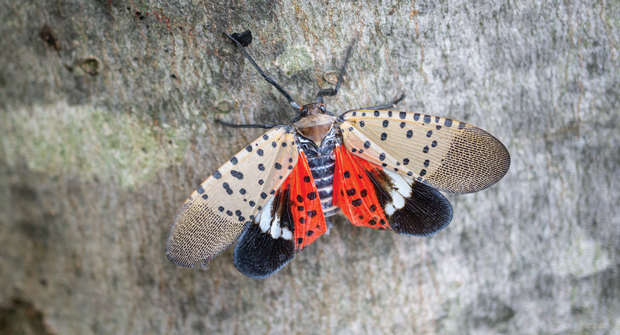TruGreen — No. 3 on the 2024 LM150 list — has announced the results of its annual study to identify the top areas in the U.S. where the invasive spotted lanternfly calls home.
The results indicate that Pennsylvania has a significant presence of spotted lanternflies, with Pittsburgh predicted to be the most impacted, a position previously held by New York City last year. TruGreen has also identified four additional Pennsylvania metro areas that have taken top spots among the twenty markets most plagued by spotted lanternflies, including Johnstown-Altoona, Wilkes Barre-Scranton, Erie and Harrisburg-Lancaster-Lebanon-York.
Following an in-depth examination of data compiled during the calendar year from May 2023 to 2024, the top 20 markets most affected by spotted lanternflies are:
- Pittsburgh, Pa.
- Johnstown-Altoona, Pa.
- Wilkes Barre-Scranton, Pa.
- Baltimore, Md.
- Harrisburg-Lancaster-Lebanon-York, Pa.
- Harrisonburg, Va.
- Wheeling W.Va., and Steubenville, Ohio
- Erie, Pa.
- Youngstown, Ohio
- Clarksburg-Weston, W.Va.
- Roanoke-Lynchburg, Va.
- New York, N.Y.
- Parkersburg, W.Va.
- Washington, D.C. (Hagerstown, Md.)
- Eureka, Calif.
- Hartford & New Haven, Conn.
- Bluefield-Beckley-Oak Hill, W.Va.
- Jackson, Tenn.
- Salisbury, Md.
- Toledo, Ohio
“The presence of spotted lanternflies is set to significantly impact these cities as we head further into summer. This issue has captured national attention, particularly with the discovery of egg masses at California’s border and the first-ever sightings within Tennessee,” said Roger May, Senior Director of Technical Operations at TruGreen. “Our research indicates that, in 2024, Pennsylvania will endure the brunt of the spotted lanternflies infestation, which poses a considerable threat to the health of trees and other crops. When it comes to an invasive species like this, proactive prevention and management are critical. Given their rapid reproductive rate, anyone who notices potential infestations should contact a professional for appropriate treatment measures.”


